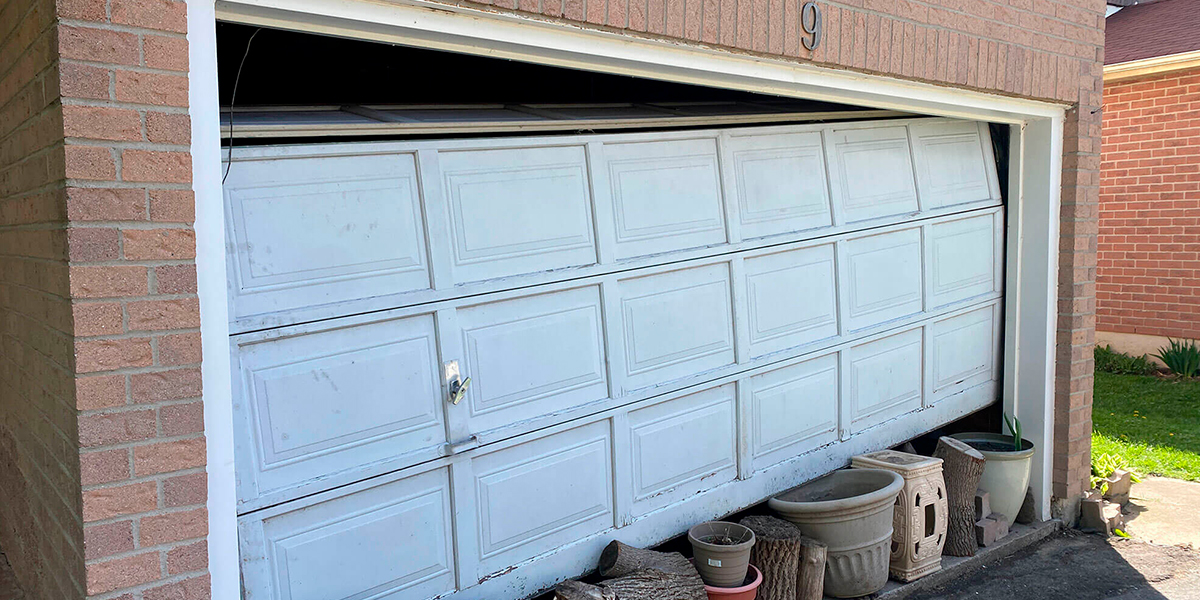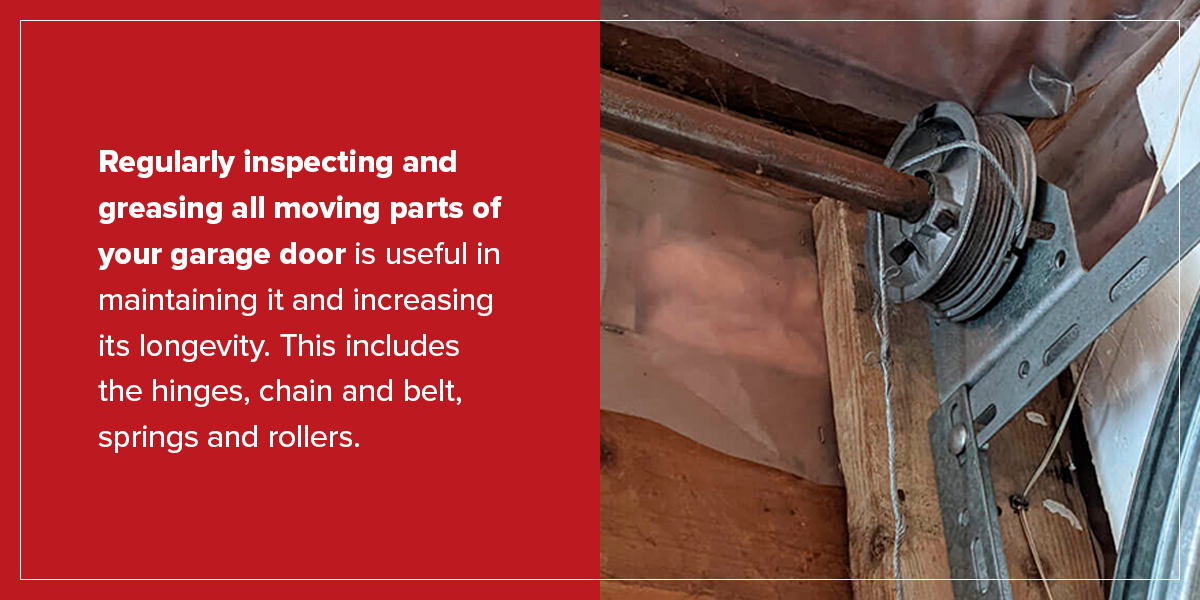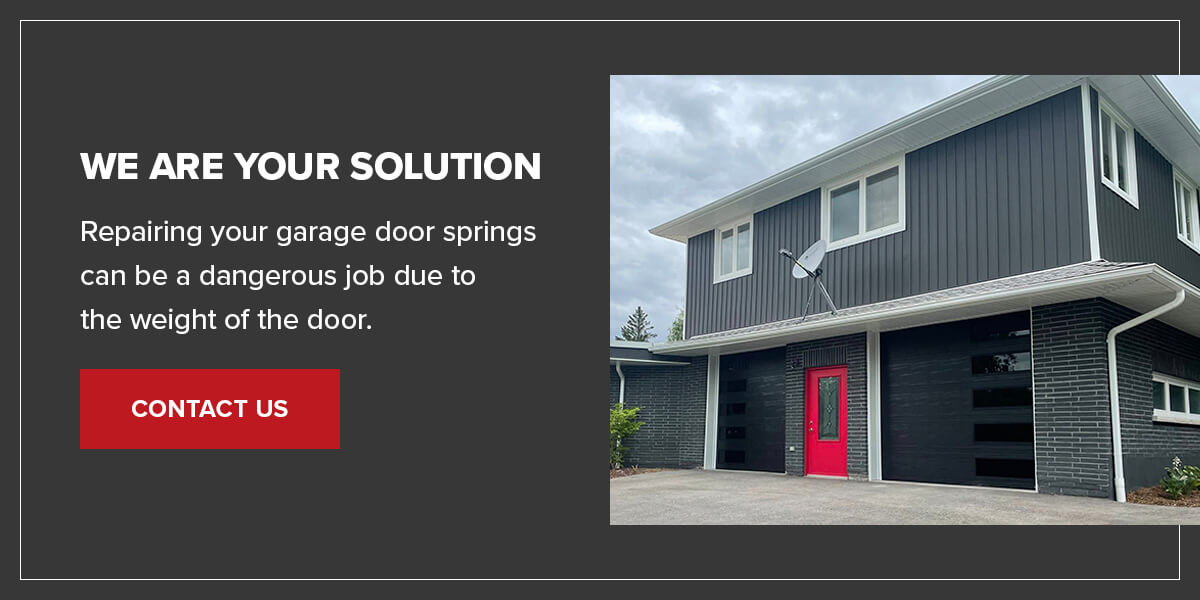Why Won’t My Garage Door Close Completely on One Side?
You have enough on your plate on a daily basis. The last thing you want to deal with is a garage door not closing evenly or having a gap on the side that makes it difficult to close.
But what comes to mind when you think about your garage door? Maybe its design appeals to you, or you think about the security it provides. Or, you might think about the garage door opener and how cool it is that the door opens ‘magically’ as you drive up. ‘
Either way, you need your garage door to perform its function without any issues. Sometimes, you will experience them regardless, so you should be prepared to identify any potential problems to help you deal with them efficiently.
Broken Cables
The main reason your garage door has a gap on one side is likely because one or both cables are broken or have snapped. The cables endure most of the strain during operation since their role is to lift and support an extremely heavy garage door. Coupled with years of use and exposure to contrasting weather elements inside and outside the garage, the strain can take its toll. The cables are also more susceptible to snap if they are old.
When one cable snaps, the tension places immense strain on the other cable. It ends up hanging lopsided, causing the garage door to close unevenly. Upon close inspection, you may see the steel cable strands frayed as a result of constant friction as it turns on the drum. This could be an indication that the cable has snapped or is about to. The cables serve the same purpose for both spring types, although they work slightly differently:
- Torsion springs: In torsion springs, the cables are wrapped around drums at either end of the spring. The spring is located inside, above the garage door in the center. When the door rolls down, it unwinds on the drum and rolls up when the door closes.
- Extension springs: Extension springs are located on both sides of the interior part of the garage door, with cables pulling the springs on a wheel attached to an S-hook that pulls and releases tension as the door opens and closes.
Another reason one or both cables could be broken is due to rust that has accumulated on them, making them weak and prone to breakage. You may even mistake the cable for being broken when it’s actually the fixture at the bottom that’s unhinged, leaving the cable hanging loosely.
Where cables are concerned, you want to avoid injury or damage by asking a professional garage door company contractor to assist with replacing them.
Faulty Springs
Your garage door springs are an important part of your door. They are needed to balance the weight of the door and make it easier to open and close. So, without the springs, you might not even be able to open your garage door.
But the springs that are part of your overall garage door system balance the door in two ways. Balancing the weight of the door is the job of the garage door spring or springs, which are mounted along the top edge of the door. The cables and springs work together and should be inspected as one unit if either is faulty or broken.
If your garage door has a gap on one side or the other when it’s closed, one of the extension springs could be damaged or broken.
There are a few signs to look out for that could indicate a faulty or damaged torsion spring or even snapped cables:
- The garage door makes a strained sound when it opens and closes.
- The garage door feels heavier and opens slower than usual.
- There’s no resistance when you pull the door down or push it up.
- A popping sound can be heard when the cable is at full tension and the spring breaks.
- Springs are visibly rusty or weak due to the cold and wear and tear.
- The garage door won’t close or open at all.
If you notice any of these, inspect the springs immediately to determine the damage and extent, if any. You want to be safe rather than sorry to avoid the costs involved in repairing the springs. Avoid attempting to fix it yourself, as it’s dangerous and could injure anyone who uses the garage door. It is best to get professional help when replacing the garage door springs.
Damaged Tracks And Rollers
Doors also need to stay evenly balanced in the tracks they roll along. If one side of the door is not in line with the other, the door won’t run smoothly in its tracks. When closed, one side of the door won’t close completely, leaving an open gap.
Side-mounted extension springs are installed above the horizontal roller tracks on both sides of the door. The extension springs are evenly matched and installed to keep the garage door properly aligned so it runs smoothly along the entire length of the track and closes evenly.
Like with torsion springs, you should look out for signs that your tracks are misaligned or damaged:
- Upon inspection, you will see the tracks are bent or curved out of place when they should be straight and flat.
- A visible gap could cause your rollers to become disconnected from the track.
- Your garage door closes unevenly.
You could try lubricating the tracks if they are not bent or warped to help them operate smoothly. Clean them first to ensure there is no dirt or grime that could jam them. Then apply a small amount of silicone-based lubricant or lithium-based grease inside the tracks.
Regularly inspecting and greasing all moving parts of your garage door is useful in maintaining it and increasing its longevity. This includes the hinges, chain and belt, springs, and rollers.
Dirty, Loose, Or Defective Sensor
Although not physically responsible for operating the garage door, the sensor plays a pivotal role in ensuring the opener does its job. If the opener can’t do what it needs to, it affects the rest of the mechanisms needed to operate the door. If you noticed the garage door not closing evenly, it could be linked to the sensor.
Dirty Sensor
The sensors are exposed to more external elements than other parts since they are located close to the ground. Wind and rain blow dirt into your garage, which accumulates and settles on the sensor’s lens. Fortunately, they are easy to clean. Just wipe them with a cloth to remove the dirt obstructing their connection to the remote.
Loose Sensor Or Loose Sensor Wiring
Sometimes the sensor or sensor wiring can get loose, causing the connection to fail. This is also a quick fix — check that they are secured in place correctly and tie any visible wires that are loose.
Defective Sensor
If you have cleaned the sensor and tied any loose wires, but it’s still not working, it could be faulty or defective. This could have happened during installation or someone could have knocked the sensor in passing or when entering or exiting the garage. You might have to get a reliable garage door company contractor to check it out and replace it if necessary.
Contact Whitby Garage Doors For Garage Door Repair
Repairing your garage door springs can be a dangerous job due to the weight of the door. If you suspect you need to adjust one or both of the extension springs on your door, or one or both of the springs are broken, give us a call at 905-665-8668. We’ll have your door running smoothly soon.



